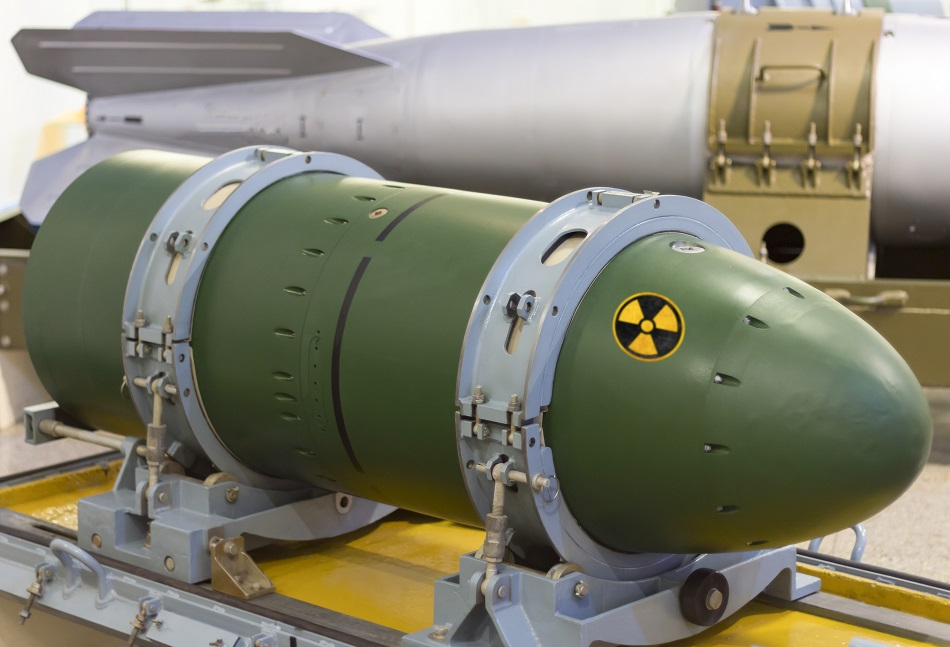By Kalwinder KaurMay 3 2013

Image Credit: gerasimov_foto_174/Shutterstock.com
A typical nuclear weapon sensor is a durable electronic device of negligible size and weight. It can be embedded in the warhead and read by a portable diagnostics system.
These embedded sensors provide instant detection of cracks, composition changing properties and corrosion without the need to dismantle the weapon. Several new sensors have been developed over recent years using glass fibers of about 75 µm in diameter - less than the thickness of a human hair. Polymeric organic compounds used as fillers inside nuclear weapons break down over time.
Several longer-lasting materials have replaced limited lifetime materials. In addition, these novel nanoscale reactive fillers sense and absorb hydrogen gas that degrades the performance of a weapon.
For instance, seismic and water-based sensors used by the international monitoring system measure sound waves that ripple through the ground during a nuclear explosion. Radionuclide detectors fixed to the airborne satellites sense radioactive particles emitted by nuclear tests. These detectors were used in tracking radioactive material released during the Fukushima Daiichi Nuclear Disaster in 2011.
Research
Hundreds of scientists interpret the data from these nuclear weapon sensors which could be harnessed for environmental monitoring.
A paper published by Jeanloz et al from the University of California identified the importance of using such sensor data in the scientific community. Following this, nearly 500,000 CO2 sensors were distributed worldwide without any government intervention for tracking CO2 emissions.
In 2011, scientists used radiation sensors originally developed for detecting nuclear weapon tests to track radiation leaked from the Fukushima Daiichi nuclear power plant in Japan. Around 280 sensors were installed for detecting radiation from nuclear weapons testing. The sensors have detected various radioactive elements including iodine-131 and cesium-137 which were the byproducts of nuclear fission within the reactors.
In 2006, engineers at the U.S. Department of Energy's Argonne National Laboratory developed sensors that are capable of detecting biological, nuclear, explosive and chemical materials effectively and quickly.
These researchers successfully carried out remote detection of chemicals and identification of explosives with the help of spectroscopic technique involving millimeter/terahertz frequencies between microwave and infrared regions of the electromagnetic spectrum. Spectral fingerprints were detected using this technique, which enabled the identification of hazardous chemicals and explosives.
Experimental results showed that this technology detected and measured poison gas precursors 60 m away from the test site at an accuracy of 10 ppm. It also identified chemicals released by nuclear weapons about 600 m away from the test site and traces of explosives including RDX, PETN, DNT and plastic explosives such as C-4 and semtex.
Further Applications
Other applications of nuclear weapon sensors include the following:
- Monitoring environmental impacts of nuclear weapon, including tsunami, earthquake, and pollution.
- Detection of chemical and biological agents.
- Tracking leakage of radiation from nuclear power plants
Conclusion
Following the Second World War, several countries produced huge amounts of upgraded nuclear weapons. Also, large quantities of weapon-grade nuclear materials were manufactured to fuel these weapons.
Although measures were taken to ensure safe operating procedures, very less consideration was given to the environmental impact.
The fabrication process generated wastes that were stored in large underground tanks at the processing plants. This waste includes precipitates and chemical solutions containing radioactive compounds and elements as well as fissionable material.
As a result, non-destructive evaluation sensor technology was developed to ensure the safe handling of nuclear wastes. This technology was employed to detect corrosion damage of the storage tank. Mechanically manipulated sensors, on the other hand, were used to examine corrosion effects on the outer walls of storage tanks. A wide range of sensors was used to monitor the operation of the equipment inserted into the waste.
A remote sampling approach in sensor technology can help locate the radiation leakage from the plant or nuclear wastes within the plant. However, one of the most challenging requirements for future sensor technology is the ability of the sensors, data acquisition systems as well as the power supplies to operate continuously for the same period of time to achieve accurate detection. Scientists must develop equipment with less maintenance and ability to be remotely repaired or replaced, to meet this requirement.
Sources and Further Reading
This article was updated on 14th February, 2020.
Disclaimer: The views expressed here are those of the author expressed in their private capacity and do not necessarily represent the views of AZoM.com Limited T/A AZoNetwork the owner and operator of this website. This disclaimer forms part of the Terms and conditions of use of this website.